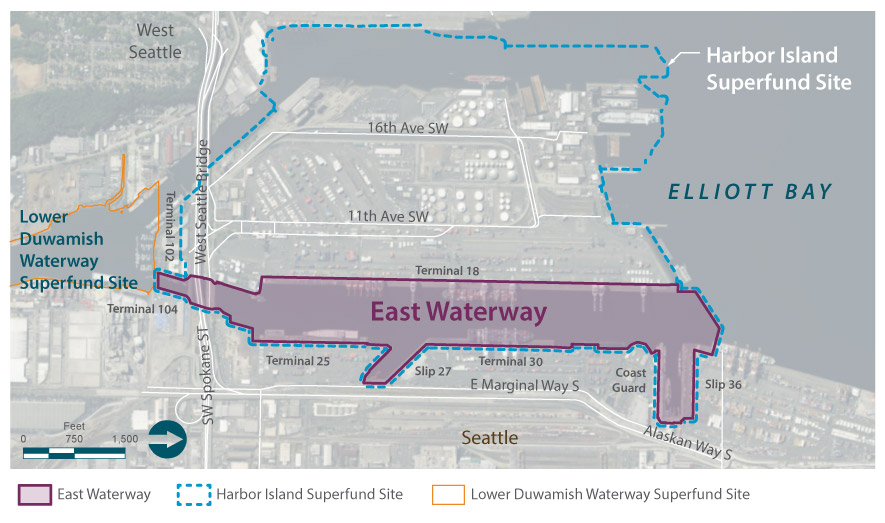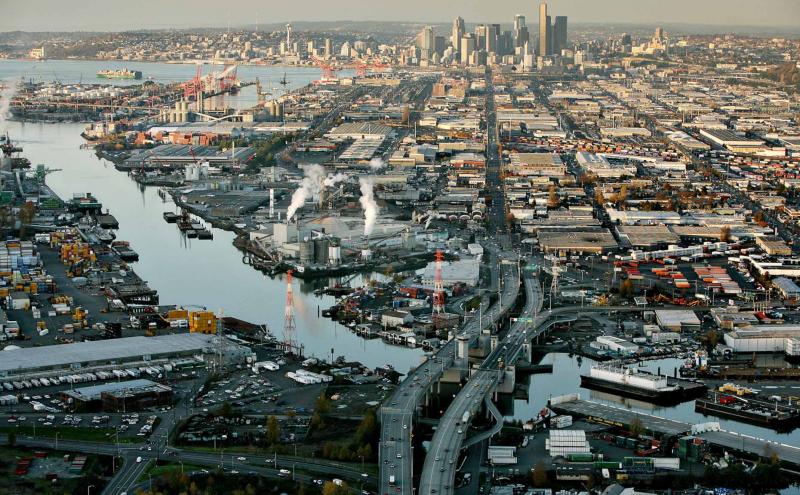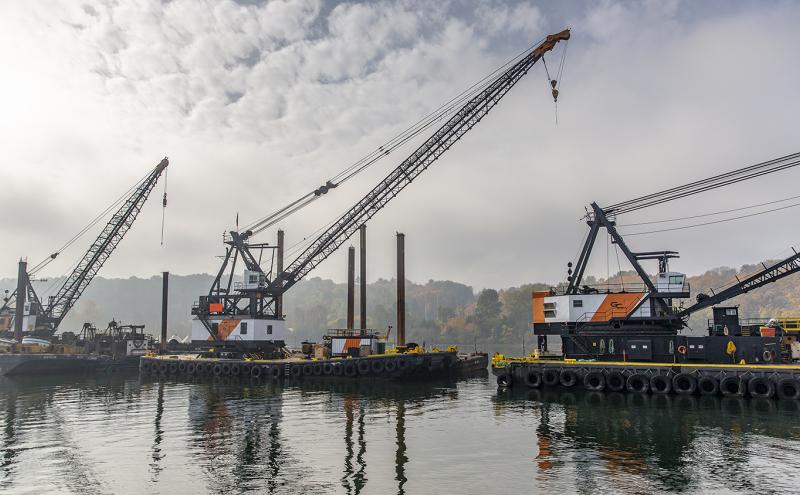The Harbor Island Superfund Site is one of the first Superfund sites in the country, listed on the National Priorities List in 1983.
Harbor Island is a human-built, industrial island in Elliott Bay. Built in the early 1900s, the 420-acre island supports businesses that conduct commercial and industrial activities, including a former lead battery recycler, ocean and rail transport operations and petroleum fuel farm storage and operation. Prior operations at the site resulted in contaminated groundwater, sediment and soil with lead and other contaminants.
The EPA divided the Harbor Island site into six smaller areas, known as “Operable Units” (OUs) to better address site cleanup. Cleanups have been completed at five of the OUs, and the remaining OU for cleanup is the East Waterway (EW).

Legacy Pollution and Harbor Island History
The human-built East Waterway stretches one mile and covers 157 acres. It was created by filling, dredging, and channeling during the construction of Harbor Island over 100 years ago. Early industrial and commercial use of the East Waterway consisted of fish processing facilities, shipyards, and facilities with flour mills, grain elevators, lumber yards, and cold storage. Wharves constructed on creosoted piles were built in the early 1900s. Commercial and industrial use continued after the 1940s, including oil terminals, shipyards, rail transfer terminals, cold storage, lumber yards, metal recycling and transfer stations.
From these legacy uses, the sediment of the East Waterway is contaminated with high levels of pollutants including polychlorinated biphenyls, arsenic, carcinogenic polycyclic aromatic hydrocarbon, tributyltin, and mercury.
Today, the East Waterway remains one of the most active commercial and industrial waterways in the Pacific Northwest, serving multiple maritime shipping container terminals.
Frequently Asked Questions
Q: Who is involved in the East Waterway cleanup?
A: The EPA oversees the East Waterway cleanup. Recent cleanup activities were completed by a group called the East Waterway Group (EWG), consisting of the Port of Seattle, the City of Seattle, and King County. The Port lead the investigation work under a legal agreement with the EPA. The City of Seattle and King County supported the Port's efforts and along with the Port, are conducting source control measures in support of the superfund cleanup.
Q: What has been accomplished so far?
A: From 2003-2005 the Port performed an interim cleanup action under EPA oversight which involved dredging 200,000 cubic yards of contaminated sediments requiring upland disposal. It was one of the first sediment cleanups performed in the Elliott Bay area.
Since 2006, the EWG has worked under direction of the EPA to collect hundreds of sediment, tissue, and water samples; perform human health and ecological risk assessments; perform other environmental analyses; and develop and compare potential cleanup actions.
The EWG members and other entities have also performed investigations and cleanup of facilities and cleaned out drainage lines within storm drains and combined sewer systems in the EW basin.
In 2014, the Remedial Investigation (RI) was completed. Information gathered from the Remedial Investigation helps the EPA determine the best and most efficient ways to address the threats to human health and the environment from the East Waterway sediment. After the RI was completed, a “Feasibility Study” was developed. This study was completed in 2019 and evaluated a range of options for cleaning up the contamination. Some options considered were: the removal of contaminants by dredging, capping over contaminants with an engineered clean sand cap; and adding thin layers of sand to less contaminated areas where sediment does not move.
Q. What are the goals for the cleanup?
A: Cleanup is required due to pollutant levels in sediment that may pose unacceptable risks to human health and the environment. The East Waterway Group is committed to the fastest possible cleanup, significant long-term risk reduction, and moving forward in a way that improves conditions for fish, wildlife, and people. Through the RI and FS, the EPA has concluded that returning the industrial East Waterway to predevelopment, and natural background conditions is not feasible. However, the cleanup actions outlined in the feasibility study will achieve significant, long-term risk reduction.
Q: What happens next?
A: The EPA released its Interim Record of Decision (ROD) for cleanup of the East Waterway. The Interim ROD includes a Responsiveness Summary, in which EPA responds to public comments they received. The next step following the Interim ROD is Remedial Design (RD). During the RD, scientists and engineers gather more data about contamination and site conditions in the East Waterway. Engineers use these data to refine which areas need cleanup and decide which cleanup technologies can be used to meet EPA’s cleanup plan requirements in specific locations.
Q. When will the cleanup be complete?
A: It will take about 5 years to complete the engineering design. Construction is estimated to take 10 years. The in-water construction window is limited to October-February to protect migrating salmon, bull trout, and steelhead.
Q. Will we be able to eat the resident fish?
A: The East Waterway cleanup is expected to significantly reduce contaminants in the environment; however, similar to other local urban waterbodies, people will still not be able to safely consume unlimited amounts of resident seafood taken from the East Waterway after the cleanup. This is largely because urban background levels of PCBs in water and sediment flowing into the East Waterway from the Green River, upstream. Those contaminants will not be impacted by this cleanup effort, and will continue to make seafood from the East Waterway unsafe.
Community Engagement
EPA manages the public engagement process for all Superfund cleanups. Including the Harbor Island Site. Visit the EPA website to find out the latest information about Harbor Island and, in particular, EPA cleanup activities, public meetings, and other information about the East Waterway.
The East Waterway Group website offers more information about the current status of the cleanup and opportunities for getting involved.



